ecosystem-guides.com
....exploring the planet's ecosystems
WALLACEAN
Tropical & Subtropical Dry
(Deciduous/Monsoon)
Broadleaf Forest
While the region of Wallacea has rainforest, it also has seasonal 'dry' forests.
The drier forests of Wallacea are found in the large country of Indonesia and the tiny new country of East Timor. They dominate the natural landscape in a group of islands often known as the 'Lesser Sundas'. These are represented in yellow in the above map (The green and orange represent the rainforest of northern Wallacea). This image shows the transition zone of Wallacea between the Australian forests of New Guinea to the east and the Asian forest of Borneo and Java to the west.
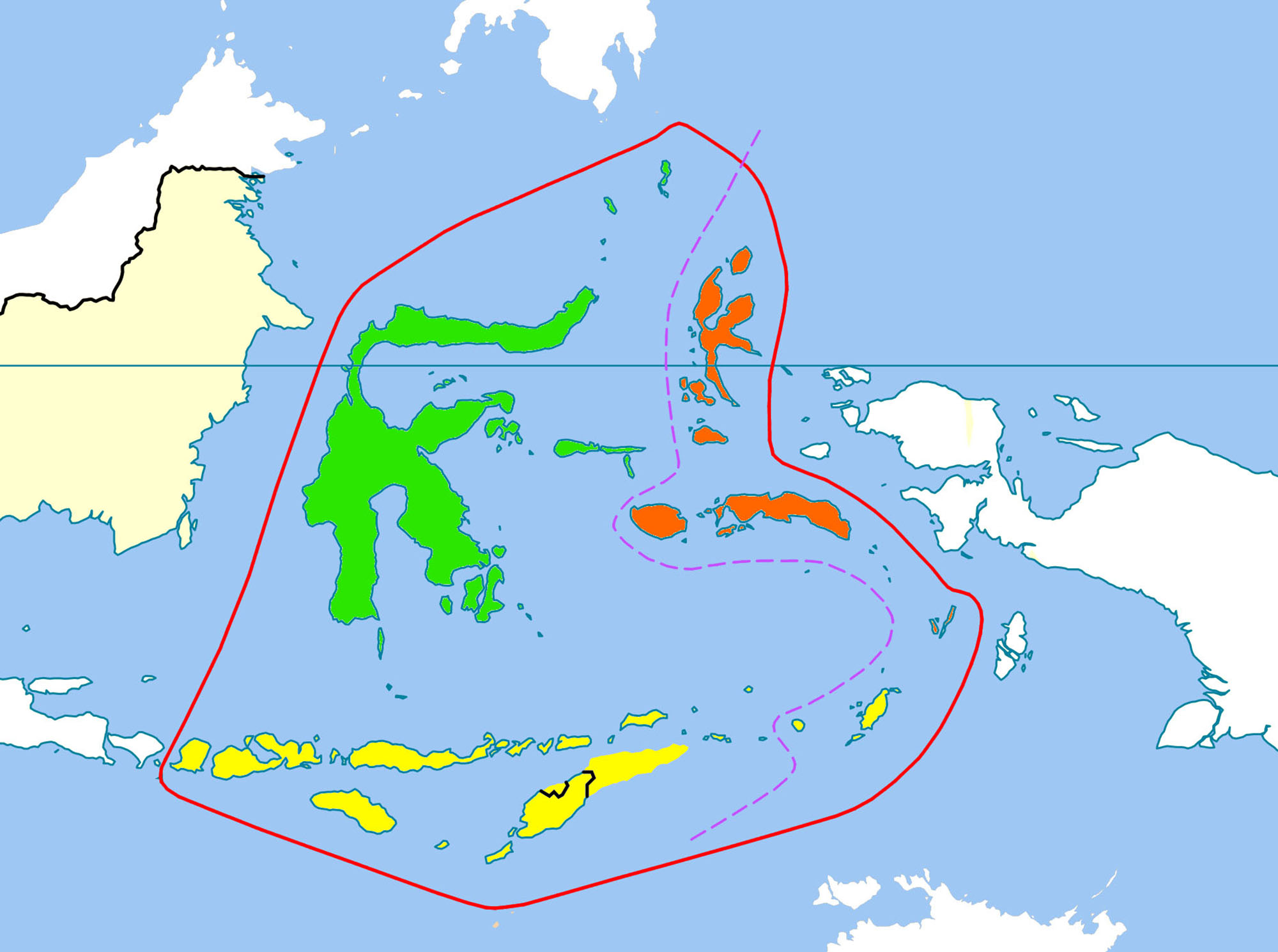 source: Pengguna:Ariefrahman, https://commons.wikimedia.org/wiki/File:Wallacea-_blank_map.png
source: Pengguna:Ariefrahman, https://commons.wikimedia.org/wiki/File:Wallacea-_blank_map.pngThese seasonally dry woodlands and monsoon forests look quite similar to the equivalent habitats across northern Australia, and share related species. Trees are spaced out and lianas can be common. On some islands, tall palms dominate the ridges. These open forests and woodlands are seasonally dry, as they are located in the rain shadow of the Australian continent. Moister trade winds that come from the south east in the southern hemisphere dry season are sucked dry as they travel across the continent. In the long dry season many species of plant lose their leaves, and the ground of open forests is crunchy underfoot. Only in the summer wet season does the area get significant rainfall. At this time, the previously sparse brown vegetation erupts into green.
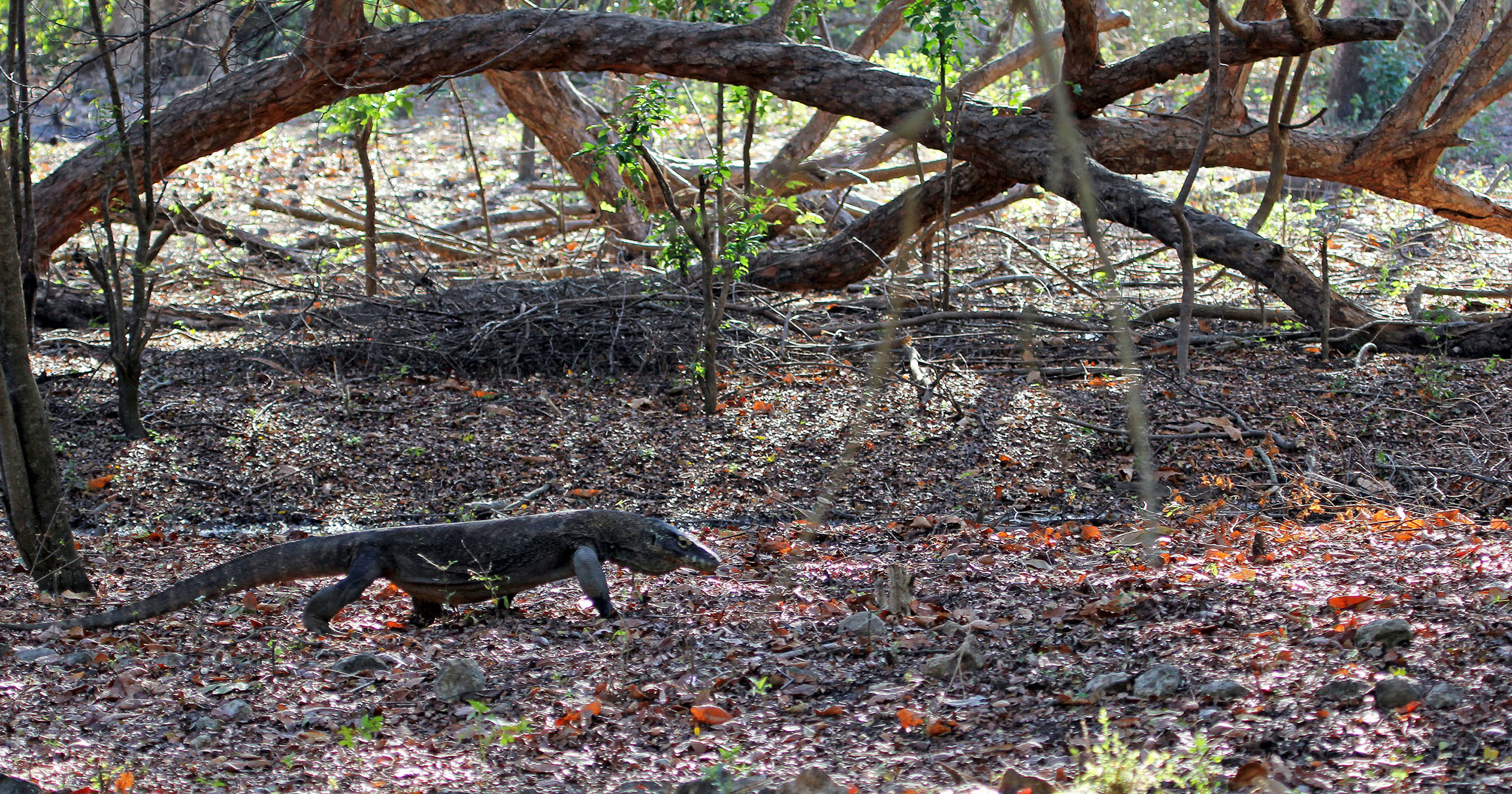
There are some 87 species in the genus Amphidromus. They are noticed due to their large size and bright colour. They can be seen crawling along the ground, but are mostly seen along tree trunks, in forests throughout tropical Asia, from India to northern Australia. They are unusual because of the direction of their coiling; most species of mollusc shells grow in one direction, but these will often be dimorphic (either direction) in the same populations. This is useful for studying asymmetry in animals.
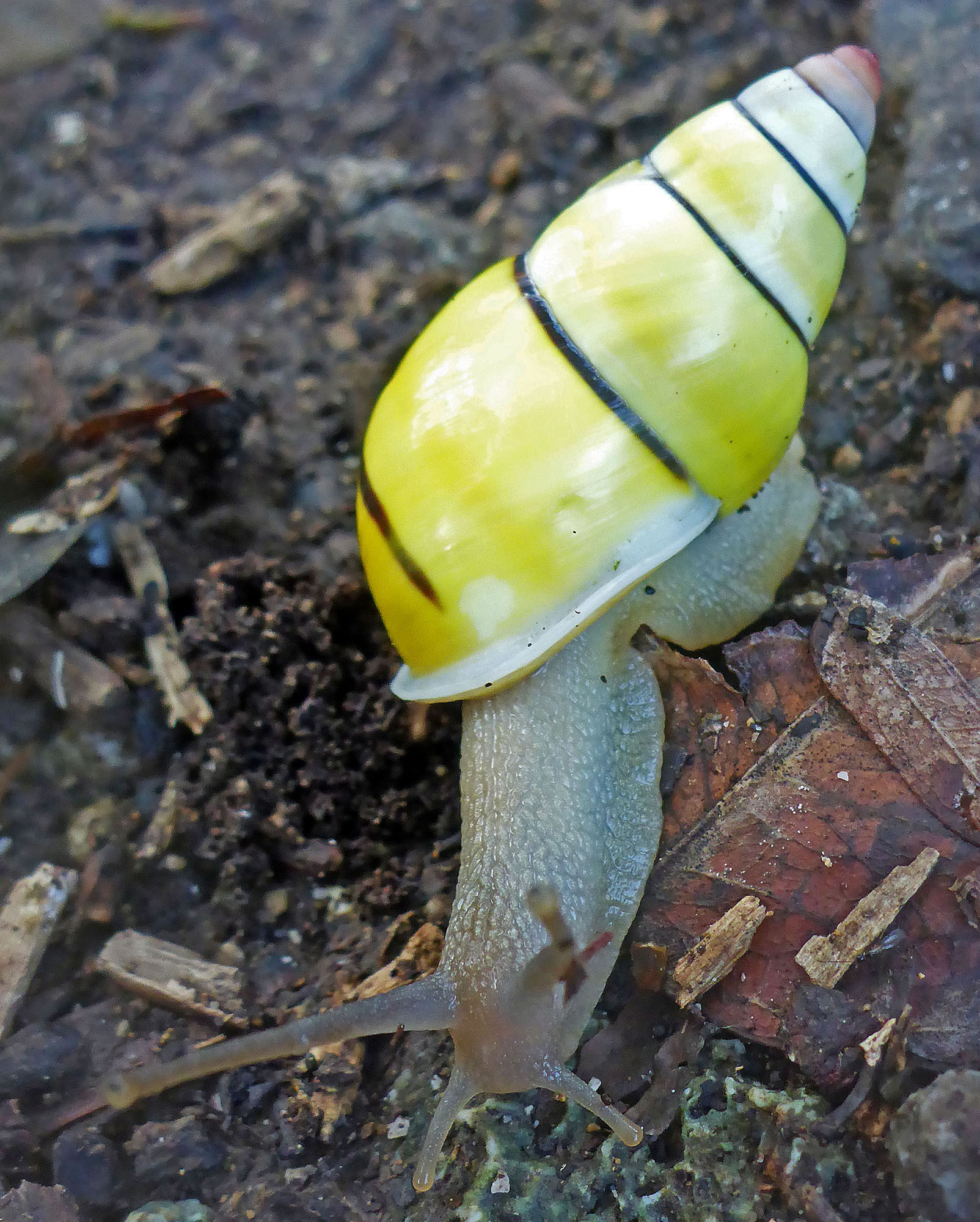 Amphidromus (possibly poecilochrous), Komodo Island, Indonesia.
Amphidromus (possibly poecilochrous), Komodo Island, Indonesia.Many of the insects in the region, such as butterflies, are not endemic to Wallacea because of their ability to disperse through flight. They are usually shared species between Asia to the west or Australasia to the east, or sometimes even to both regions. There are many examples, including: Danaus affinis, 'Swamp Tiger'. This is a widespread and variable species, ranging from Asia to Australia, and including the Wallacea region.
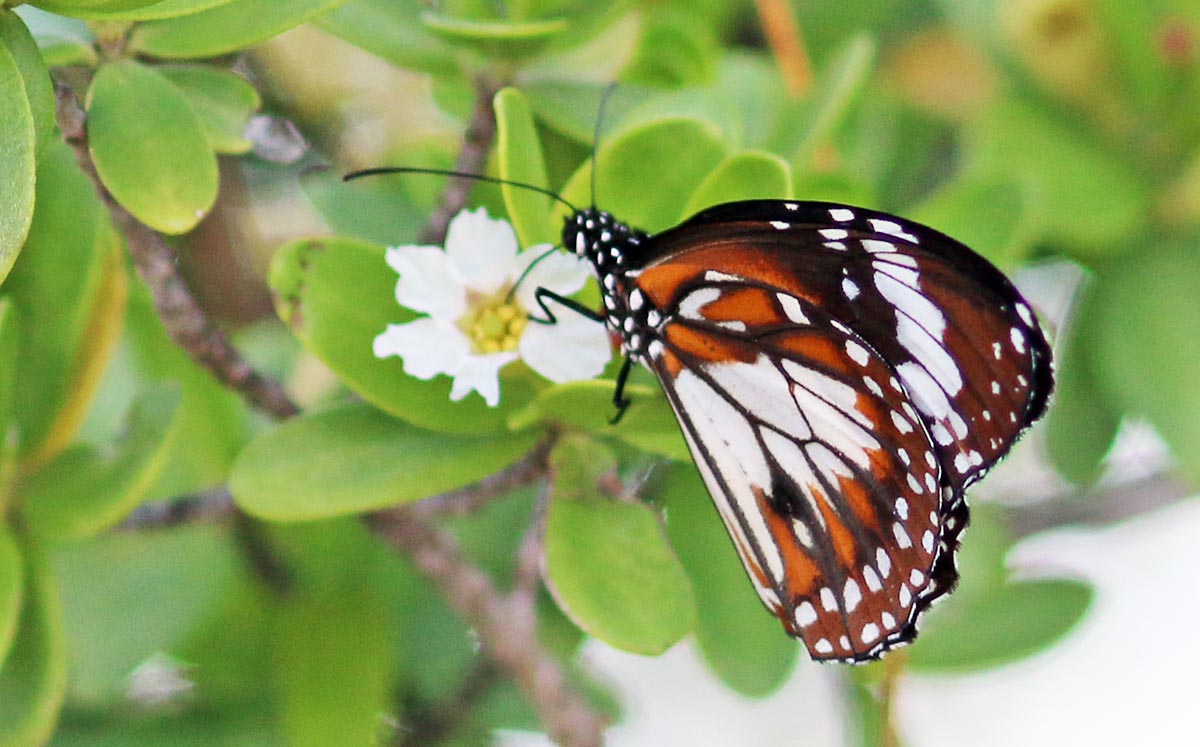 (Nino Konis Santana National Park, East Timor)
(Nino Konis Santana National Park, East Timor)The isolated islands of southern Wallacea have resulted in the evolution of some interesting endemic reptiles. The apex terrestrial predator in this habitat is in fact a reptile; and it is the largest lizard on the planet - the 'Komodo Dragon', Varanus komodoensis.
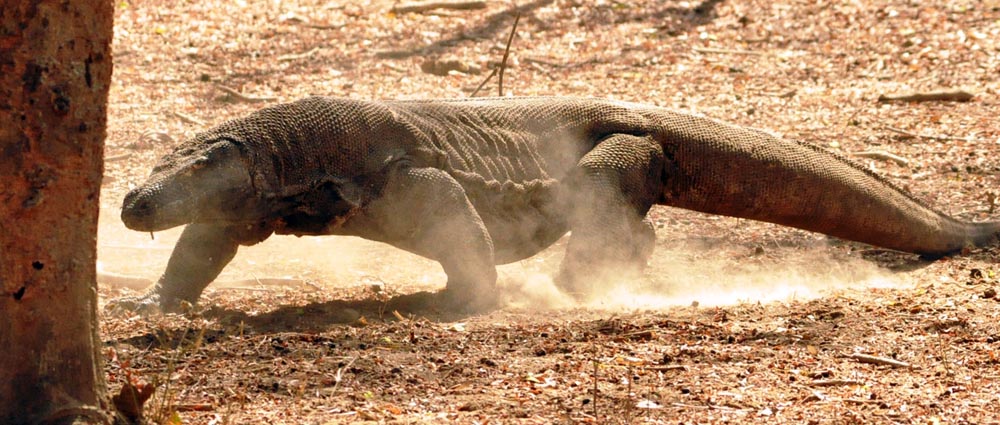 (Komodo Island, Indonesia)
(Komodo Island, Indonesia)It was once thought that the saliva of Komodo Dragons was full of dangerous bacteria that helped infect and bring down prey; this has now been observed not to be true. However, recent studies suggest Komodo dragons (and a few other large monitors) may have mildly venomous bites. The argument goes on. Either way, the take home message is: don't get bitten by a Komodo Dragon!
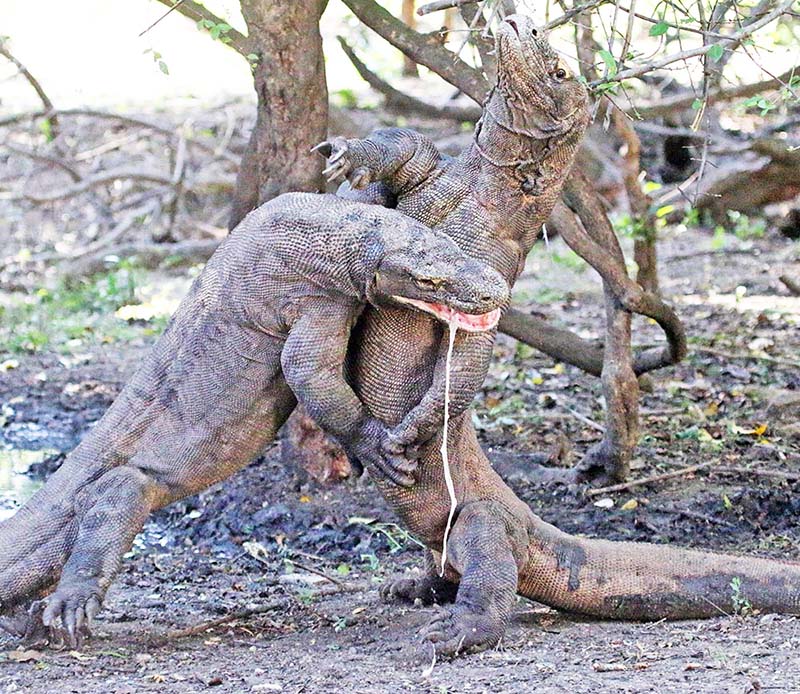
There are other smaller reptiles, such as the 'Flying Dragons', which includes about 40 species of small lizards in the Draco genus. They have stretched skin over their expanded ribs. This allows small glides between tree trunks. These occur very fast, so don't expect to see it happen, or if it does, it is a blur that just looks like a leap. If that wasn't enough flashiness, when males display, they bob up and down flopping their bright yellow neck flap called a dewlap. These small lizards are common in open and closed forests in tropical Asia, from southern India to the Lesser Sundas, but are not necessarily commonly seen. They are most noticed in more open woodlands, such as in the drier parts of Wallacea. The species below may be Draco boschmai, a Wallacean endemic.
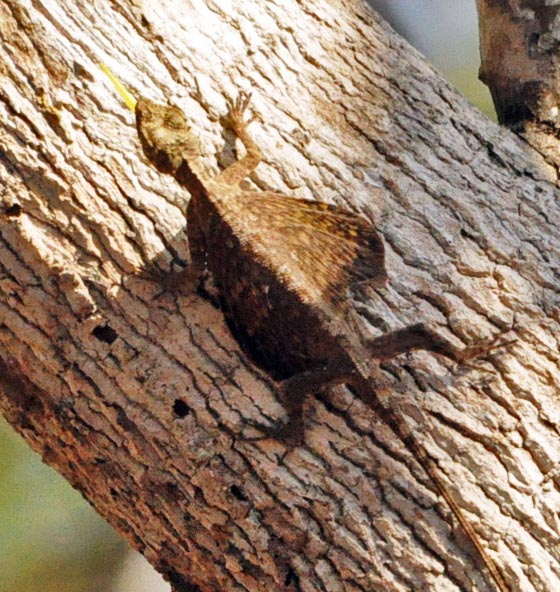
Being located between Asia and Australia, Wallacea enjoys groups of birds from both regions, but also hosts many endemics to this 'in between' area. In recent years, there have been more new species of birds recognized in the woodlands of southern Wallacea, as previous wider ranging species have been split. East Timor in particular now has a large range of endemics
 'Timor Bush Chat', (Com, East Timor)
'Timor Bush Chat', (Com, East Timor)Pigeons and Doves of the family Columbidae have done well dispersing between islands and adapting to the dry woodland habitats. Species inclde regional endemics such as the 'Timor Cuckoo-Dove' Macropygia magna.
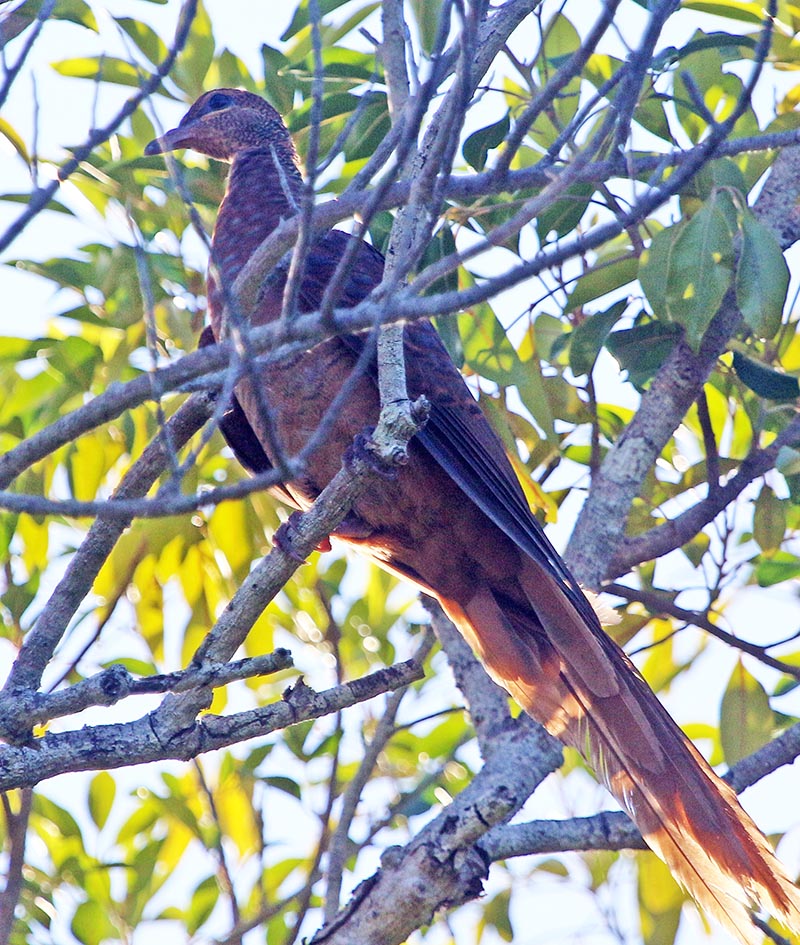 (Nino Konis Santana National Park, East Timor)
(Nino Konis Santana National Park, East Timor)The mostly tropical Asian family Dicaeidae contains the 'flowerpeckers', including regional endemics such as Dicaeum igniferum, the 'Black-fronted flowerpecker', which is found only in the Lesser Sunda islands..
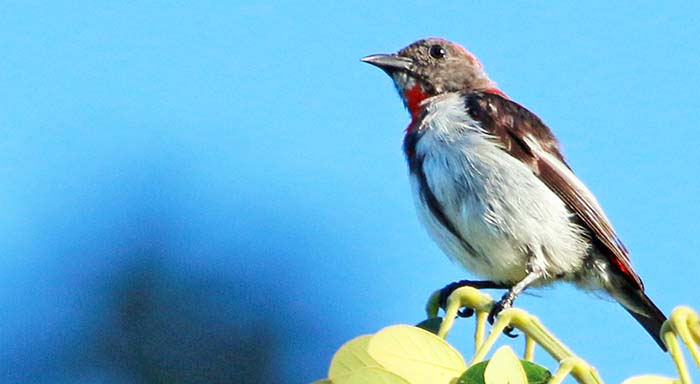 (Satonda Island, Indonesia)
(Satonda Island, Indonesia)There is a relatively small but interesting range of interesting fossil evidence suggests that in prehistoric times there were other significant mammals living in the woodlands of southern Wallacea, including a pygmy Stegadonts (a type of elephant). Today, the most common mammals encountered are those that disperse well between the islands, the 'Fruit Bats' or 'Flying Fox'.
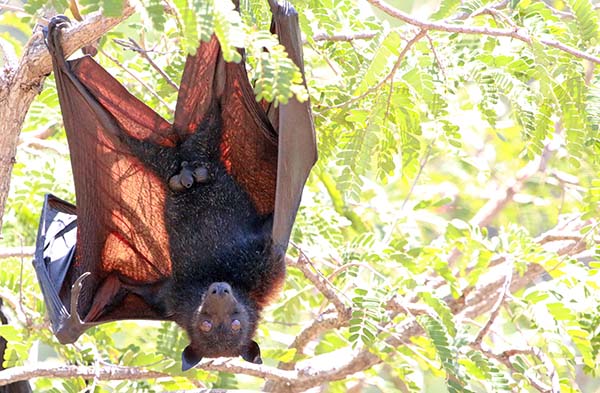 (Satonda, Indonesia)
(Satonda, Indonesia) Places to experience the Wallacean dry forest
Places to explore the tropical dry forest of Wallacea include Komodo Island and Rinca. Both of these islands are the places to see the infamous Komodo Dragons. Satonda Island is a more remote island in Indonesia. A bit more difficult to get to is Nino Konis National Park in East Timor; this new countries first and only national park.



